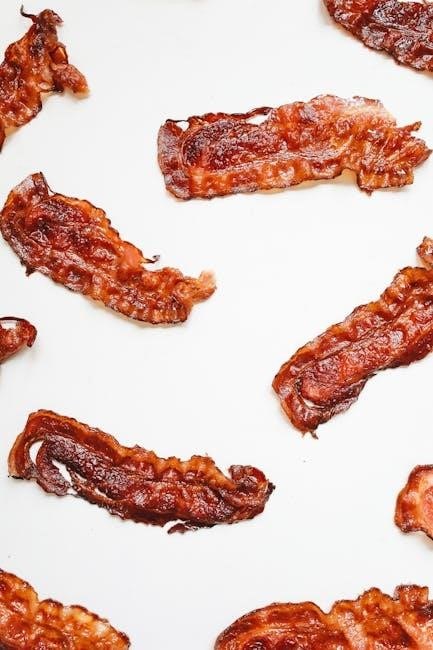Manual Transmission to Automatic Conversion: A Comprehensive Guide
Embark on a journey to understand the intricacies of swapping your manual transmission for an automatic one. This guide offers a comprehensive look into this complex automotive modification, providing you with essential information.
The prospect of converting a manual transmission to an automatic one might seem daunting, but understanding the process is the first step. This conversion involves replacing the entire manual system with an automatic counterpart, including the transmission itself, associated hardware, and potentially the vehicle’s computer system.
Several factors drive this decision, from seeking enhanced driving comfort to adapting a vehicle for specific needs. This modification requires careful planning, as it’s not a simple bolt-on procedure. It often involves significant changes to the vehicle’s drivetrain, electrical system, and potentially the chassis. Sourcing compatible parts and ensuring proper integration are crucial for a successful conversion.
This guide will delve into the intricacies of this conversion, exploring its feasibility, costs, and potential impact on your vehicle’s performance. The goal is to provide a clear understanding, enabling you to make an informed decision.
Feasibility of Converting Manual to Automatic Transmission
The feasibility of converting from a manual to an automatic transmission hinges on several factors specific to your vehicle and resources. While technically possible, the process isn’t universally straightforward. Certain car models lend themselves more readily to this conversion due to available parts and existing aftermarket support.
A primary consideration is the availability of a compatible automatic transmission that fits your vehicle’s engine and chassis. Compatibility issues can arise with newer vehicles due to complex electronic systems. Integrating the automatic transmission’s computer controls with the existing engine control unit (ECU) can be challenging, sometimes requiring specialized programming or a complete ECU replacement.
Furthermore, the structural design of the vehicle itself can pose limitations. Space constraints in the transmission tunnel or the need for modifications to accommodate the automatic transmission’s size and mounting points can complicate the process. Assessing these factors upfront is crucial in determining the overall feasibility of the conversion.
Cost Analysis: Factors Influencing the Price
The cost of converting a manual transmission to an automatic one can vary significantly based on several key factors. The most substantial expense is usually the automatic transmission unit itself. Prices fluctuate depending on whether you opt for a new, used, or rebuilt transmission. New transmissions offer reliability but come with a higher price tag, while used ones are cheaper but carry the risk of unknown wear and tear.
The specific car model also plays a crucial role. Some vehicles have readily available conversion kits, which can simplify the process and potentially lower costs. However, for other models, custom fabrication and sourcing of individual parts may be necessary, driving up expenses. Labor costs are another significant consideration, depending on whether you choose a professional mechanic or attempt a DIY conversion.
Finally, ECU recoding and wiring harness modifications can contribute to the overall cost. These electronic adjustments are often essential for seamless integration of the automatic transmission.
Parts Required for the Conversion
A successful manual to automatic transmission conversion hinges on acquiring a comprehensive set of parts. Foremost is the automatic transmission itself, selected to match your vehicle’s engine and drivetrain. The torque converter, responsible for transmitting engine power to the transmission, is another essential component. You’ll also need a new flexplate, designed to connect the automatic transmission to the engine, replacing the manual transmission’s flywheel.
Shifting mechanisms, including the gear selector and linkage, are necessary for controlling the automatic transmission. Furthermore, the conversion requires a transmission cooler to regulate the temperature of the transmission fluid, preventing overheating. Hydraulic lines are needed to connect the cooler and transmission.
An automatic transmission-compatible ECU (Engine Control Unit) or recoding of the existing ECU is essential for proper electronic control. Finally, miscellaneous hardware like bolts, brackets, and potentially a modified or new driveshaft may be required for a seamless installation.
Labor Costs: DIY vs. Professional Installation
When considering a manual to automatic transmission conversion, labor costs represent a significant portion of the overall expense. Opting for a DIY approach can substantially reduce these costs, potentially saving thousands of dollars. However, this route demands extensive mechanical knowledge, specialized tools, and ample time. Incorrect installation can lead to severe damage, negating any initial savings.
Conversely, professional installation ensures expertise and precision. Mechanics familiar with such conversions can complete the job efficiently and correctly. Labor costs typically range from several hundreds to several thousands of dollars, depending on the vehicle’s complexity and the shop’s hourly rate. While pricier upfront, professional installation minimizes the risk of errors and provides peace of mind.
Ultimately, the decision hinges on your skill level, available resources, and risk tolerance. Carefully weigh the pros and cons before committing to either option to ensure a successful and cost-effective conversion.
Parts Sourcing: New vs. Used Components
Sourcing the necessary parts for a manual to automatic transmission conversion presents a crucial decision: opting for new or used components. New parts offer reliability and a warranty, ensuring optimal performance and longevity. However, they come at a premium cost, potentially escalating the overall project expenses significantly.
Used parts, sourced from salvage yards or online marketplaces, provide a more budget-friendly alternative. These components can substantially reduce the initial investment, making the conversion more accessible. However, used parts carry inherent risks, including wear and tear, potential defects, and the absence of a warranty.
Careful inspection and thorough testing are paramount when considering used components. Assessing their condition and compatibility with your vehicle is essential to avoid future complications. Balancing cost savings with reliability is key when deciding between new and used parts for your transmission conversion. Researching reputable suppliers and understanding the potential trade-offs will help you make an informed decision.
ECU Recoding and Wiring Harness Considerations
Successfully converting from a manual to an automatic transmission involves crucial adjustments to your vehicle’s electronic control unit (ECU) and wiring harness. The ECU, the car’s computer, needs recoding to recognize and properly manage the new automatic transmission. This recoding process ensures seamless communication between the transmission and other vehicle systems.
A manual transmission ECU lacks the programming to control an automatic transmission’s shifting patterns and torque converter lockup. Therefore, reprogramming or replacing the ECU becomes necessary. Furthermore, the wiring harness, which connects the transmission to the ECU and other components, often requires modification or replacement.
Automatic transmissions have different electrical connections than manual ones, necessitating changes to the harness. This may involve adding wires, changing connectors, or even installing a completely new harness designed for an automatic transmission. Proper ECU recoding and meticulous wiring harness modifications are vital for a successful and reliable transmission conversion. Neglecting these aspects can lead to performance issues, diagnostic errors, and potential damage to the transmission or ECU.
Modifications to Drivetrain and Chassis
Converting from a manual to an automatic transmission often requires significant modifications to your vehicle’s drivetrain and chassis. The drivetrain, which transmits power from the engine to the wheels, needs adjustments to accommodate the different size and configuration of the automatic transmission. This may involve shortening or lengthening the driveshaft to match the new transmission’s length.
Additionally, the transmission mount on the chassis may need modification or relocation to properly support the automatic transmission. Some conversions might even necessitate reinforcing the chassis to handle the increased weight or different torque characteristics of the automatic unit.
Furthermore, consider potential interference issues. The automatic transmission might require adjustments to the transmission tunnel, potentially involving cutting or welding to ensure proper fitment. The shift linkage system will also need to be completely reworked, as automatic transmissions use a different mechanism than manual ones.
These modifications are crucial for ensuring the structural integrity and proper functionality of your vehicle after the conversion. Neglecting these modifications can lead to vibrations, stress on other components, and ultimately, a compromised driving experience.
Impact on Vehicle Performance and Fuel Efficiency
Switching from a manual to an automatic transmission inevitably impacts your vehicle’s performance and fuel efficiency. Generally, automatic transmissions, particularly older models, can result in a decrease in acceleration and responsiveness compared to their manual counterparts. This is due to factors like torque converter slippage and the inherent weight of the automatic unit.
Fuel efficiency can also be affected. Automatic transmissions, again, especially older ones, tend to consume more fuel than manuals, often due to the energy lost in the torque converter and the need for the engine to work harder to overcome the transmission’s internal resistance.
However, modern automatic transmissions with features like lock-up torque converters and multiple gear ratios are designed to minimize these drawbacks. They can sometimes even match or exceed the fuel efficiency of a manual transmission, while providing smoother acceleration.
Ultimately, the specific impact on your vehicle’s performance and fuel economy will depend on the type of automatic transmission installed and the overall design of your car. It’s crucial to research and select a transmission that is well-suited to your vehicle and driving style to mitigate any potential negative effects.
Alternatives to Transmission Conversion
Before committing to a full manual-to-automatic transmission conversion, consider exploring alternative solutions that might better suit your needs and budget. One such option is installing a Gear Vendors overdrive unit. This unit adds an extra gear to your existing manual transmission, effectively lowering the engine’s RPM at highway speeds. This can improve fuel efficiency and reduce engine wear without the complexity of a complete transmission swap;
Another alternative is axle regearing. Changing the gear ratios in your vehicle’s axles can alter its acceleration and top speed characteristics. If you’re primarily seeking better highway cruising, taller gear ratios can lower RPMs and improve fuel economy. However, this approach might not address the core desire for the convenience of an automatic transmission.
These alternatives can be less expensive and less invasive than a full transmission conversion. They allow you to fine-tune your vehicle’s performance characteristics without the significant modifications required for a complete swap. Weigh your priorities carefully, research the available options, and determine which solution best aligns with your goals.
Gear Vendors Overdrive Unit
A Gear Vendors overdrive unit presents an intriguing alternative to a full manual-to-automatic transmission conversion. This auxiliary transmission bolts onto the tail end of your existing manual gearbox, providing an additional overdrive gear. This effectively splits each of your existing gears, giving you more flexibility in choosing the optimal RPM for any given speed.
The primary benefit of a Gear Vendors unit is improved fuel efficiency at highway speeds. By lowering the engine’s RPM, you reduce fuel consumption and engine wear. It also offers enhanced towing capabilities, providing better control and power delivery when hauling heavy loads.
Installation of a Gear Vendors unit is generally less complex than a full transmission swap, but it still requires professional installation and proper setup. The cost can be significant, often ranging around $3500, but it’s typically less expensive than a complete automatic conversion. Consider this option if you desire improved fuel economy and towing performance without sacrificing the control of a manual transmission.
Axle Regearing
Axle regearing is another alternative to consider if you’re seeking to alter your vehicle’s performance characteristics without undertaking a full transmission conversion. Regearing involves replacing the gears inside your axles, which directly affects the final drive ratio. This, in turn, impacts acceleration, top speed, and fuel economy.
If you find your manual transmission lacking in certain situations, such as struggling to maintain speed on hills or experiencing poor fuel economy at highway speeds, regearing your axles might be a viable solution. Lower gears (numerically higher ratio) will improve acceleration and towing capacity but reduce top speed and fuel economy. Conversely, higher gears (numerically lower ratio) will improve fuel economy and top speed but reduce acceleration and towing capacity.
The cost of regearing typically ranges around $1000 per axle, making it a potentially more affordable option than a full transmission swap. However, it’s crucial to carefully consider your specific needs and driving habits to determine the optimal gear ratio for your vehicle. Professional installation is highly recommended to ensure proper setup and avoid potential damage.
Specific Car Model Considerations
The feasibility and complexity of a manual to automatic transmission conversion are heavily dependent on the specific car model. Each vehicle has its unique design, electronic systems, and available space, which significantly influence the conversion process. Some car models may have readily available automatic transmission options, making the swap relatively straightforward. In contrast, others might require extensive modifications due to incompatible components or a lack of available parts.
Researching whether your particular car model has been successfully converted before is crucial. Online forums and communities dedicated to your specific vehicle can provide valuable insights and experiences from others who have attempted the same conversion. These resources can help you identify potential challenges, required parts, and recommended solutions.
Furthermore, consider the availability of automatic transmission control units (TCUs) and wiring harnesses compatible with your car’s existing electronic systems. The compatibility of these components is essential for seamless integration and proper functionality of the automatic transmission. Ignoring these specific model considerations can lead to unforeseen complications and increased costs during the conversion process.
Finding a Qualified Mechanic for the Conversion
Locating a skilled and experienced mechanic is paramount for a successful manual to automatic transmission conversion. This conversion is not a standard repair, requiring specialized knowledge and expertise. Seek out mechanics with a proven track record in performing complex modifications, specifically transmission swaps.
Begin by asking for recommendations from local car clubs, online forums, or trusted automotive parts suppliers. A mechanic familiar with your car model and the intricacies of transmission swaps is highly desirable. Once you have a list of potential candidates, thoroughly vet their qualifications and experience.
Inquire about their previous experience with similar conversions, asking for references or examples of their work. A reputable mechanic should be able to provide detailed explanations of the conversion process, potential challenges, and estimated costs. Ensure they are familiar with ECU recoding and wiring harness modifications, as these are critical aspects of the conversion.
Finally, obtain written estimates from multiple mechanics, outlining the scope of work, parts required, and labor costs. Comparing these estimates will help you make an informed decision and choose a mechanic who offers both expertise and a fair price.
Is the Conversion Worth It? Weighing Pros and Cons
Deciding whether to convert from a manual to an automatic transmission requires careful consideration of the advantages and disadvantages. The primary benefit lies in enhanced driving convenience, particularly in heavy traffic. Automatic transmissions eliminate the need for constant clutch engagement and gear shifting, reducing driver fatigue.
However, the conversion process is often expensive, involving significant modifications to the vehicle’s drivetrain, ECU, and wiring harness. The cost can range from several thousand dollars, potentially exceeding the vehicle’s value. Furthermore, the conversion may negatively impact the car’s performance and fuel efficiency.
Manual transmissions typically offer better control and acceleration, while automatic transmissions can sometimes feel sluggish. Fuel economy may also decrease due to the automatic transmission’s inherent energy losses. Before proceeding, assess your driving needs, budget, and tolerance for potential performance trade-offs.
Consider whether the increased convenience outweighs the financial investment and potential drawbacks. Exploring alternatives, such as purchasing a different vehicle with an automatic transmission, may be a more practical solution.




